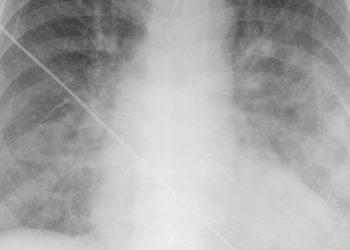Hemodynamic markers of pulmonary hypertension in heart failure with preserved ejection fraction are associated with mortality
1. Pulmonary hypertension associated with heart failure with preserved ejection fraction (PH-HFpEF) is common in patients undergoing a right heart catheterization.
2. Transpulmonary gradient (TPG), pulmonary vascular resistance (PVR), and diastolic pulmonary gradient (DPG) are predictors of mortality and cardiac hospitalizations in PH-HFpEF.
Evidence Rating Level: 2 (Good)
Study Rundown: Pulmonary hypertension associated with heart failure with preserved ejection fraction (PH-HFpEF) is a phenotype of HFpEF, and, as with HFpEF in general, PH-HFpEF lacks specific therapies. This is likely due to phenotypic heterogeneity and lack of outcomes data. Additionally, PH-HFpEF also lacks a diagnostic and prognostic consensus, and the role of precapillary involvement remains controversial. In this study, the authors determined whether precapillary involvement, as measured by hemodynamic markers, increased the risk of mortality and hospitalization in patients with HFpEF. They found that PH-HFpEF was very common in patients undergoing a right heart catheterization (56% of patients with PH in the setting of left heart disease, PH-LHD). More importantly, they found that hemodynamic markers of precapillary involvement—specifically, transpulmonary gradient (TPG), pulmonary vascular resistance (PVR), and diastolic pulmonary gradient (DPG)—predicted both mortality and cardiac hospitalizations in patients with PH-HFpEF.
Though this study only examined patients from a single center, and used parameters measured via invasive hemodynamic techniques, which may have biased towards patients with more severe disease, the findings from the study have important implications for the design of clinical trials in the effort to find more effective therapies to treat PH-HFpEF.
Click to read the study, published in JAMA Cardiology
Relevant Reading: Pulmonary hypertension due to left heart diseases.
In-Depth [retrospective cohort study]: This study examined 10 023 patients who underwent right heart catheterization at the UPMC Presbyterian Hospital, and classified patients as having no PH, precapillary PH, or PH-LHD. The authors examined the association of specific hemodynamic markers of precapillary involvement—transpulmonary gradient (TPG), pulmonary vascular resistance (PVR), and diastolic pulmonary gradient (DPG)—with a primary outcome of all-cause mortality, and secondary outcomes of acute hospitalization and cardiovascular hospitalization. They found that out of the sample of patients who underwent right heart catheterization, 16.0% had precapillary PH, and 46.1% had PH-LHD (of which 25.8% had PH-HFpEF and 18.1% had PH-HFrEF). Survival was worse in precapillary PH and PH-LHD compared to the group without PH. A PVR of 3 Woods units or more was associated with the highest risk for mortality (hazard ratio (HR), 1.54; p < 0.001), followed by a TPG of more than 12 mmHg (HR, .41; p < 0.001) and DPG of 7 mmHg or more (HR, 1.44; p < 0.001). The same hemodynamic markers were also associated with higher risk for cardiac hospitalization.
Image: PD
©2018 2 Minute Medicine, Inc. All rights reserved. No works may be reproduced without expressed written consent from 2 Minute Medicine, Inc. Inquire about licensing here. No article should be construed as medical advice and is not intended as such by the authors or by 2 Minute Medicine, Inc.





![Engineered stem cells mitigate liver damage caused by radiation [PreClinical]](https://www.2minutemedicine.com/wp-content/uploads/2014/12/Human_embryonic_stem_cells-75x75.png)

